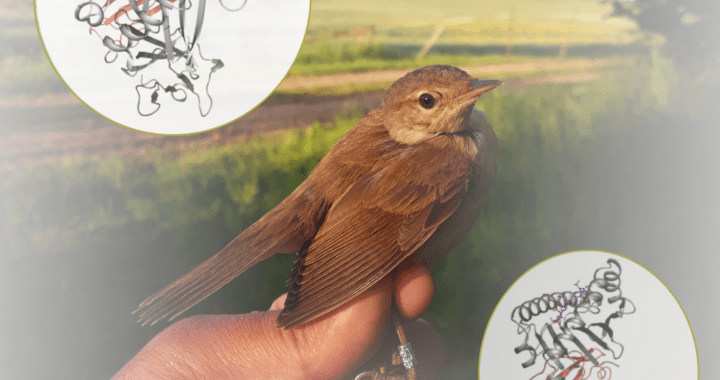Recently Sandra Eltschkner (one of our young members) published her work she performed during her postdoc in the lab of
Helena Westerdahl at Lund University, Sweden. Sandra is very happy to introduce the topic to you herself:
“We recently published the first structure of a Major Histocompatibility complex class I (MHC I) from a wild songbird, the Great reed warbler, in complex with different peptide antigens. The Great reed warbler is a long-distance migratory bird that winters in Sub-Saharan Africa and breeds in the Western Palearctic (which includes Europe) in summer. Migratory birds encounter a variety of different pathogens at their breeding, stop-over and wintering sites, and hence their immune system needs to be especially well adapted. MHC-I molecules are central to the adaptive immune system in vertebrates, since they present antigens to CD8 + T-cells, thus enabling the detection of intracellular pathogens. Our structures reveal an unusual conformation of pathogen-derived antigens (peptides) in the peptide-binding groove of the MHC I molecule of the Great reed warbler and provide a first step towards understanding the extraordinary immune adaptation capacity of migratory birds.”
The paper is entitled The structure of songbird MHC class I reveals antigen binding that is flexible at the N-terminus and static at the C-terminus, is published in Frontiers Immunology and can be found through this link (reference: doi.org/10.3389/fimmu.2023.1209059). The presented X-ray structures from the proteins presented in this paper can be found in the Protein Data Bank with accession codes 7ZQI and 7ZQJ.
Do you want to meet Sandra? She will be running the “Kristalfabriek” at the Open Day at Amsterdam Science Park on 7th of October. You will get the change to crystallise Lysozyme and look at your self-made crystals.

